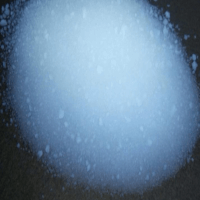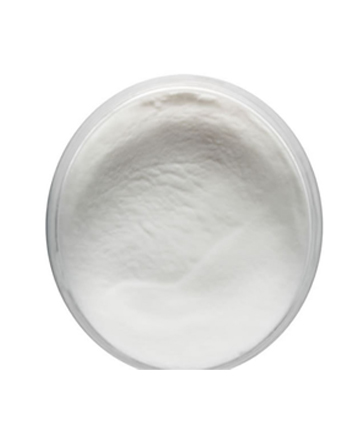Professional solutions on concrete addtives, Concrete Foaming Agent, Superplasticizer, CLC Blocks Additives, and foaming machine
(Concrete release agent – the silent guardian of the construction industry: categories, mechanisms and advantages)
Currently, many commercial concrete release agents exist at home and abroad. Different types of release agents have different release effects between concrete and formwork. The mainstream classification method of release agents in the industry is mainly based on the products' raw materials. There are primarily pure oil release agents, emulsified oil release agents, saponified oil release agents, paraffin release agents, chemically active release agents, synthetic resin release agents, and others.
Types of concrete release agents
1. Pure oil release agent
The main ingredients of this type of release agent include mineral oil, animal oil, vegetable oil and mixtures of various oils. The main components of this type of release agent include mineral oil, animal oil, vegetable oil and mixtures of multiple oils. But at present, most of them use mineral oil, that is, lubricating oil, mechanical oil, waste engine oil, etc. with lower viscosity and better fluidity among petroleum industry products. Pure oil release agents have good isolation and lubrication properties and are easy to demould. They play a certain anti-rust protection role for steel formwork or reinforced concrete formwork and are a more satisfactory product. The only drawback is that it will pollute the concrete surface and affect subsequent decoration; the interaction between oil and the alkali in the concrete will cause the concrete surface to become powdery. In particular, waste engine oil that you need to pay attention to may contain sulfuric acid harmful to formwork and concrete and polychlorinated biphenyls harmful to human health, so use it with extreme caution.
2. Emulsified oil release agent
Emulsified oil release agent is also called emulsion release agent. It is divided into water-in-oil emulsion (W/O) and oil-in-water emulsion (O/W). Using emulsification technology, water-in-oil emulsion is made by suspending water in an oil phase. It is widely used in molds or wooden molds with wet surfaces. When used in steel molds, rust inhibitors must be added to reduce color defects and pitting. The oil-in-water emulsion is made by dispersing oil in a continuous water phase. Oil is usually used as raw material and is emulsified to obtain an oil-in-water emulsion release agent. This type of release agent has an excellent demolding effect, a simple preparation process, low cost, almost no pollution to concrete, and is suitable for various formwork such as steel and wooden formwork, so it is widely promoted and used in our country.
3. Saponified oil release agent
This type of release agent is often used in wooden templates. Its main component is an emulsion formed after the saponification reaction of oil (such as mineral oil, animal and vegetable oil) and alkali. Soap emulsion can also be used. Its demoulding effect mainly uses saponified emulsion to lubricate and isolate the concrete and wood formwork. The raw materials of soap release agents are easily available, the production cost is low, the preparation process is simple, and the use and operation are convenient. It is suitable for wood molds, floor molds, etc.
4. Paraffin-based release agent
Paraffin-based release agents in China are mainly emulsion-based paraffin release agents. Solvent-based paraffin release agents have very high requirements for the company's production qualifications and production safety control, and solvent-based release Many oily salivae can replace the use effect, so few manufacturers are doing it. Paraffin release agents have a better degassing effect on concrete products' surfaces and stronger rain resistance than other emulsion release agents. However, when the paraffin release agent coating is too thick, it will leave traces of paraffin on the concrete surface, affecting the beauty and secondary decoration of the product surface.
5. Chemically active release agent
The active component of a chemically active release agent is mainly fatty acid. When applied to the template, it can slowly react with the free alkali (calcium hydroxide) in the concrete to generate water-insoluble fatty acid salts. It can prevent the consolidation of concrete in contact with the formwork, form an isolation layer between the formwork and the concrete, and play the role of demoulding. This type of release agent has a good release effect, is non-toxic, has no stains, and does not rust the formwork, but it is more expensive and improper application can cause powdering of the concrete surface, so it is rarely used in China.
6. Synthetic resin release agent
The main components of this type of release agent are 1 to 2 types of methyl silicone resin, epoxy resin, and unsaturated polyester resin. The release agent produced has a very good release effect and It can be used many times, but the cost is higher and it isn't easy to clean the stencil when updating the coating.
7. Other types of release agents
Other types of release agents mainly include electric release methods, plastic spray films, rubber coatings and other release agents. However, these products are expensive and difficult to be promoted and applied in engineering.
Release mechanism of concrete and formwork
The separation of concrete and formwork must overcome the adhesion between the formwork and hardened concrete or the cohesion of the concrete surface. The release agent reduces this effect through chemical or physical reactions. Its release mechanism is mainly achieved through the following methods.
1) Physical lubrication: The release agent acts as a lubrication between the formwork and the concrete, weakening the affinity between the two to release the form.
2) Film-forming isolation effect: The release agent is coated on the surface of the template to form a film, which relies on the film to play an isolation role and thereby release the mold.
3) Chemical effect: The release agent reacts with some minerals or ions in the fresh concrete to form a substance with an isolation effect, thus playing a demoulding effect.
Regardless of the release agent's form or whether it has any of the above single or combined functions, a thin layer of hydrophobic material exists between the concrete and the formwork, forming an interface that is easy to separate. Remove from the mold.
Supplier
TRUNNANO is a supplier of concrete release agents, which is concrete and relative products with over 12 years experience in nano-building energy conservation and nanotechnology development. It accepts payment via Credit Card, T/T, West Union and Paypal. Trunnano will ship the goods to customers overseas through FedEx, DHL, by air, or by sea. If you are looking for high-quality concrete release agents, please feel free to contact us and send an inquiry. (sales@cabr-concrete.com).
(Concrete release agent – the silent guardian of the construction industry: categories, mechanisms and advantages)







